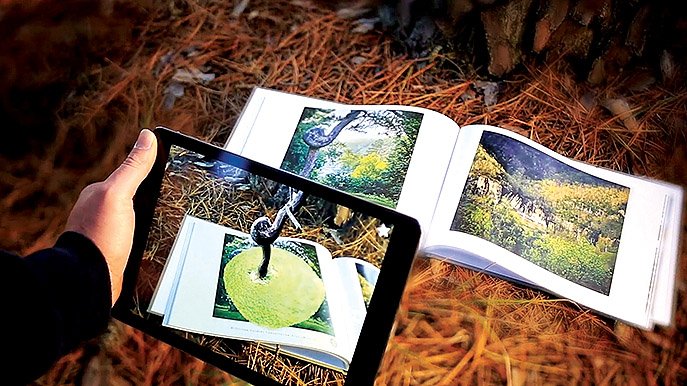The year was 2001.
Edward C. Robison III was already working as a photographer, but in a traditional manner, creating Cibachrome prints from 4-by-5-inch large-format transparencies.
FYI
‘Ozark Landscapes’
The limited edition book by Edward C. Robison III, released by Sacred Earth Press, is available at Iris at the Basin Park and Eureka Thyme in Eureka Springs and on Amazon.
The creativity was compelling in the field, and the art was impressive on the page, but the work in the darkroom was intense and demanding.
"At the time, Cibachrome prints were the most archival and stable prints available," Robison explains. "They also had incredible color and depth, but they were a nightmare to print. The surface was super glossy and would scratch with the slightest touch. It would also oftentimes take me eight to 10 hours of darkroom work to get a good final print, and then, when someone ordered a print from that edition, it would take me another four or five hours in complete darkness to get a matching print."
At the same time, the technical wizards in Hollywood were imagining a new kind of photography, one that allowed the images to move on the page. It was, of course, purely fictional, confined to the world of Harry Potter and Hogwarts.
Fast forward 14 years. No longer movie magic -- but still magical -- moving images have made their way into a new book by Robison titled "Ozark Landscapes."
It took more than magic for Robison to get from there to here. The first step was moving away from traditional printing, in part because the home darkroom was causing health issues for his family.
"I tried every other type of color darkroom printing process available," the Eureka Springs photographer says. "At that time, digital printing was just starting to gain traction, but most of the prints I had seen were just not that good. In 2002 Epson released a new printer and archival inkset called Ultrachrome. I was hesitant, but I gave it a try, and I am still printing with a variation of that inkset today. The switch to an all digital workflow (i.e., camera) took me quite a bit longer. I didn't switch from 4-5 film to digital until 2009."
The giant leap to "living photographs" didn't happen until much more recently.
"I started capturing time-lapse images a little over a year ago, but I wasn't sure what to do with them, how to sell or market them," Robison says. "It wasn't until last January when I was making New Year's resolutions, and I had decided to do a book on the Ozarks, that I came up with the idea of incorporating my time-lapses into an interactive book. After I realized no one had done an 'augmented reality' interactive art or photography book yet, I had quite a bit to learn, and I spent the next two months mastering and merging the technologies to make it happen."
Through more magic -- a free app, downloadable at ECR3.com/AR -- the images that have made Robison's work collectible now come with a chance to "experience the environment through time-lapse video, ambient sounds and a three-dimensional view of the location," he says.
"Unlike a still photograph, interactive images bring people closer to the subject," says Robison, who started his artistic career as a realism painter. "They can really feel like they are there. Augmented reality really breaks the barrier between the printed page and the viewer. I also learned how to create 3-D models of natural objects. This technology allows the viewer to interact with the object themselves in a 3-D world, which is virtually impossible through just a still photograph."
Different too are the challenges for Robison, which now happen on the front end.
"To make compelling work, it takes a huge amount of time in the field spent in just one place. Many time-lapses take several hours to capture," he says, adding that the motion time-lapse rig "takes quite a bit of planning and time to set up and also adds a lot of weight to my backpack!"
But the work remains worth it to Robison.
"I have traveled all over the U.S. photographing, and I always come back to the Ozarks as my favorite place in the country. I don't know if it's that it reminds me of the woods I grew up in an hour east of Kansas City, or if it is the color palette of lush greens and blues. ... But it is one beautiful and magical place. I find a spiritual connection in the woods here that I just don't get anywhere else. They are constantly calling me to come explore their many hidden treasures."
NAN What's Up on 01/02/2015
